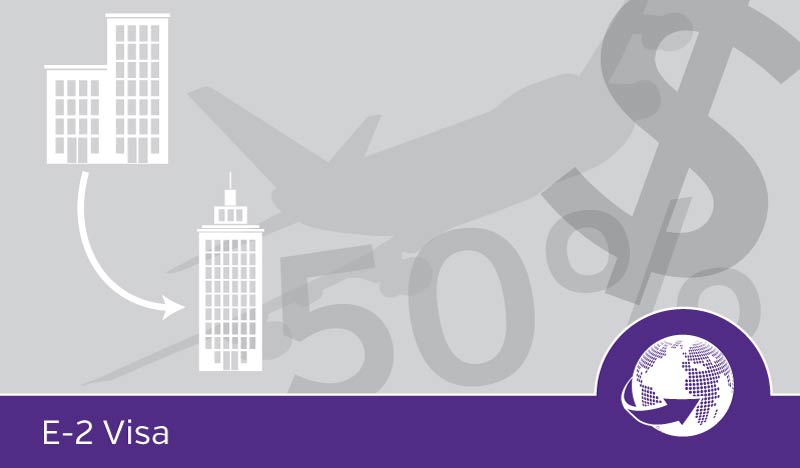H-1B ALTERNATIVES
With the demand for the H-1B visa far exceeding the cap, it is important to know the H-1B alternatives available to HR professionals and employees.
According to the USCIS, there were 172,500 applications filed between April 1, 2014 and when the cap closed on April 7. The cap is set at 65,000, with another 20,000 available to individuals with advanced degrees. This means that roughly 50% of H-1B petitions will be not be accepted.
One alternative to the H-1B visa is the E-2 visa.
E-2 VISA
The E-2 visa is a work-based visa option available to foreign nationals from countries that have entered into treaty of commerce and navigation with the United States.
To be eligible for the E-2 visa the person or entity investing into the U.S. enterprise must maintain a controlling interest of at least 50% ownership of the company at all times.
If the investor is a business (and not a single person), the entity must have invested a substantial amount of capital to start the U.S. entity and/or maintain a controlling interest at all times of the transfer of the employees to the U.S. entity. Also, the nationality of the entity must be that of a country belonging to the treaty of commerce and navigation with the U.S. and the employee being transferred must belong to this nationality as well.
Furthermore, when the investor is a business, the employee being transferred generally must be a manager, executive, or a person essential to the operations of your business.
When applying for the E-2 visa you can bypass the USCIS and apply directly at the U.S. consulate abroad which will cut down overall processing times. However, each consulate has their own rules and procedures, so processing times may vary.
Most E-2 visa stamps will be valid for at least two years, but foreign nationals entering the U.S. on an E-2 visa will only receive 2 years of E-2 status in the U.S. per entry. To get an extension you will need to file Form I-129 to the USCIS or attend a new visa stamping appointment at a U.S. consulate abroad.
There are a couple of things to keep in mind about the E-2 visa if you are considering using it as one of the H-1B alternatives.
First, the E-2 visa is not dual-intent like the H-1B visa. So, if you are looking to pursue permanent residence in the U.S., you may have to transition to an H-1B visa or other dual-intent visa like the L-1 visa.
Second, the evidence required to obtain an E-2 case be very document-heavy, which can lengthen turnaround and approval times.
To obtain a new E-2 visa stamp, consulates will sometimes require that the foreign national apply “de novo” at a U.S. consulate abroad, which is essentially like starting from the beginning of the process.
If you didn’t make the cap you may want to consider the E-2 visas as one of your H-1B alternatives.








